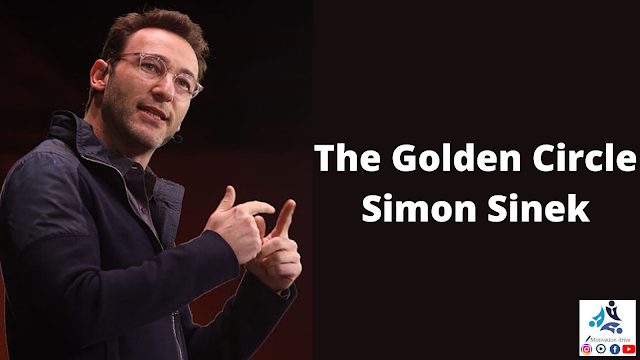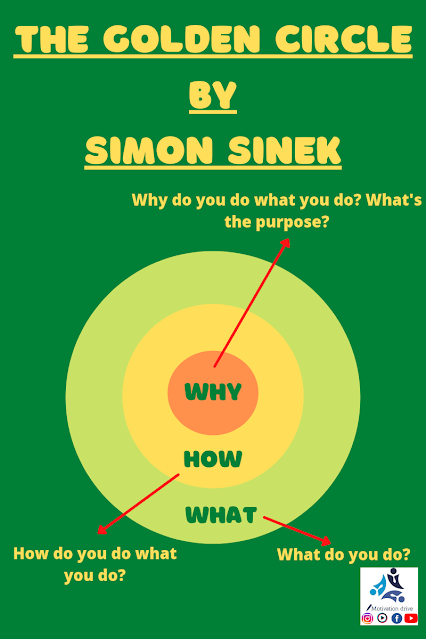Introduction Every year begins the same way for most people. January arrives with excitement, ambition, and big promises. Gyms are full, notebooks are fresh, and goals feel achievable. By March, that energy starts fading. By July, exhaustion replaces discipline. And by December, the same sentence returns: “Next year, I’ll do it properly.” The problem isn’t a lack of motivation. The problem is the absence of a sustainable strategy. Real progress doesn’t come from dramatic starts. It comes from calm consistency, repeated over time. If you want 2026 to be different—not just emotionally, but measurably—then you don’t need a complicated system. You need a clear structure that carries you through the entire year, especially when motivation disappears. Here is a simple, realistic way to approach 2026 so that you don’t just start strong—but finish stronger. Q1 (January–March): The Starting Point The first quarter is where most pe...
Introduction
The Golden Circle concept was first mentioned by Simon Sinek in his book 'Start With Why: How Great Leaders Inspire Everyone to Take Action'. Today we will understand Simon Sinek golden circle with practical examples. It was a very popular concept even then when it was published in this book. The Golden Circle model given by Simon Sinek explains the reason regarding the ability of some people and organizations to inspire other people and successfully differentiate themselves. Humans respond the best when the messages communicate with the parts of the brain that control their emotions, behaviour, and decision-making. This is the neuroscience behind the Golden Circle Theory. There are three main questions that make up the Golden Circle:The Golden Circle
1. Start with WhyAccording to Simon Sinek, the first question of the three main questions that make up the golden circle is ‘Why’. The most important question that can be addressed by an organization or an individual is ‘Why’, as it inspires others to action. By this ‘Why', you can explain your purpose and the reason behind your existence, and the behaviour that you do.
Watch this video to explore your hidden power:
The theory given by Simon Sinek says that by communicating the passion behind the 'Why' successfully, you can communicate with the limbic brain of the listener. The limbic brain processes the feelings of decision making, loyalty, and trust in us. It also taps into that part of the listener that influences behaviour. For this reason, the Golden Circle model is considered a highly influential theory of leadership.
2. How
In the opinion of Simon Sinek, the second question of the three main questions that make up the Golden Circle is ‘How’. The 'How' factors of the organization include the strengths or values of the people or the organization. These factors differentiate them from their competitors. In the opinion of Simon Sinek, addressing the question 'How' also helps them to communicate with the limbic brain that is, the part that governs behaviour and emotion. Sinek suggests that the organizations should improve the way they articulate their 'How'. The ‘How’ is an explanation of what the person or the organization does.
3. What
The third question of the three main questions that make up the Golden Circle is ‘What’. The question ‘What’ includes products and services offered by an organization or job done by an individual. Simon Sinek mentions that this question, when addressed, engages only with the rational part of our brain called the neocortex. He mentioned that the neocortex drives decision-making less than the limbic brain. Most of the successful people and organizations generally express the ‘why’ behind the ‘what’ that they do rather than just focusing on what they do.
2. How
In the opinion of Simon Sinek, the second question of the three main questions that make up the Golden Circle is ‘How’. The 'How' factors of the organization include the strengths or values of the people or the organization. These factors differentiate them from their competitors. In the opinion of Simon Sinek, addressing the question 'How' also helps them to communicate with the limbic brain that is, the part that governs behaviour and emotion. Sinek suggests that the organizations should improve the way they articulate their 'How'. The ‘How’ is an explanation of what the person or the organization does.
3. What
The third question of the three main questions that make up the Golden Circle is ‘What’. The question ‘What’ includes products and services offered by an organization or job done by an individual. Simon Sinek mentions that this question, when addressed, engages only with the rational part of our brain called the neocortex. He mentioned that the neocortex drives decision-making less than the limbic brain. Most of the successful people and organizations generally express the ‘why’ behind the ‘what’ that they do rather than just focusing on what they do.
Summary
The Golden Circle theory helps people express the reason behind what they do, how they do it, and what exactly they do. Some of the critics say that this theory just reflects the passion of the leaders and the organization. These leaders and organizations express their commitment and enthusiasm and this inspires others.Simon Sinek mentioned the Golden Circle example of Apple in his book. He demonstrated the concept of the Golden Circle theory by using the example of the computer company Apple. The Apple Company starts with the centre of the golden circle, that is, ‘WHY’. Due to this reason, they communicate their vision to their potential buyers first instead of communicating what they do and how they do it. This shows the difference in their thinking from others thus, challenging the status quo. After that, they move on to the ‘HOW’ question where they inform their potential buyers that they have easy-to-use eye-catching designs. And then finally, they come to the ‘WHAT’ question that is, they make computers. In the opinion of Simon Sinek, customers do not buy products just for the sake of what companies do rather they buy the products because of why they do it. We have successfully understood Simon Sinek golden circle with practical examples and let's implement it in our lives also.


Comments
Post a Comment
Please do not add any spam link in the comment box